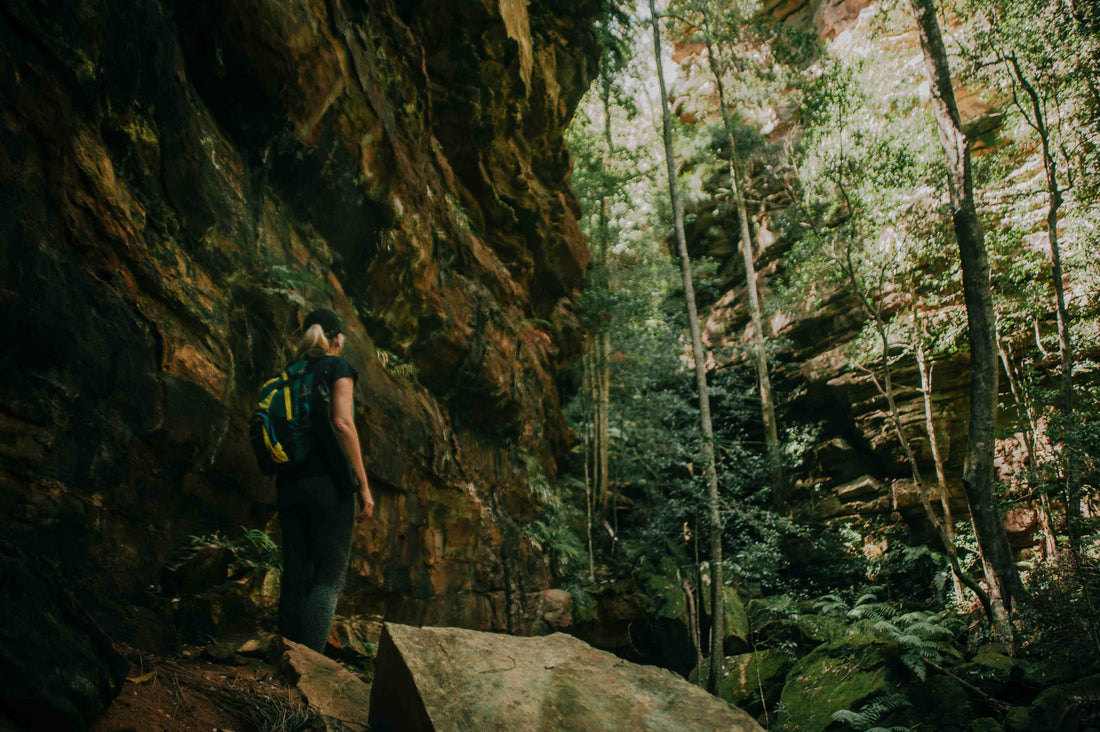
Is Solo Hiking Safe?
Share
Is Solo Hiking Safe?
There’s something quietly empowering about hiking on your own. Just you, your footsteps, and the sounds of the bush — no conversation, no compromise, and no need to match anyone else’s pace. It’s a chance to breathe a little deeper, think a little clearer, and feel a little stronger with every step.
But solo hiking also comes with valid questions: Is it safe? What if something goes wrong? What if I get lost or injured? The short answer is yes — solo hiking can be safe — if you plan for it properly.
Whether you’re heading out for your very first solo loop walk or prepping for something more remote, here’s how to stay safe, smart, and confident when hiking alone in NSW.
1. Choose the Right Trail for Your Experience
When you’re hiking solo, it’s not the time to push your limits. Stick to well-marked, familiar, or beginner-friendly trails — especially if it’s your first time walking alone.
Look for:
- Popular tracks with regular foot traffic
- Clear signage and maps available online
- Reliable phone reception (if possible)
- Shorter loops or out-and-back trails to reduce navigational risk
Some great solo-friendly hikes in NSW include: the Grand Canyon Track (Blue Mountains), Bouddi Coastal Walk, or Lake Parramatta Reserve.
2. Tell Someone Where You’re Going
This one’s essential. Before you head off, let someone know:
- Which trail you’re doing
- What time you’re starting
- When you expect to finish
- What to do if you don’t check in
You can text a friend or use a check-in app, but make it a habit — even for shorter walks.
We like to send a photo of the trailhead map with a quick message: “Starting now, back by 3pm. I’ll text when I finish.”
3. Pack Like You’re the Only Help You’ve Got (Because You Are)
When you hike alone, you don’t have a buddy to share gear with — so your pack needs to cover all bases. Bring:
- Navigation (map, compass, GPS app with offline maps)
- Fully charged phone (plus a power bank)
- First aid kit
- Emergency whistle
- Headlamp or torch (even for daytime walks — just in case)
- Extra snacks and water
- Rain jacket and warm layer
- Personal Locator Beacon (PLB) for remote hikes
Think of your pack as your trail insurance — better to have it and not need it, than need it and not have it.
4. Learn Basic Navigation Skills
You don’t need to be a cartographer — but having some basic navigation knowledge can save you if things go off-track.
- Learn how to read a trail map before you go
- Know your key landmarks (creek crossings, junctions, viewpoints)
- Always check for trail notes or recent updates from NPWS or AllTrails
If something feels wrong — it probably is. Pause, retrace your steps, and stay calm.
5. Trust Your Instincts — and Back Yourself
One of the best things about solo hiking is learning to trust yourself. But that also means listening to your gut.
- If the weather turns or the trail feels unsafe, turn back
- If you feel uneasy around another person on the trail, keep distance and stay visible
- If you’re tired, take a break — there’s no one to impress or keep up with
Solo hiking isn’t about bravery — it’s about awareness. Your instincts are a valid safety tool.
6. Hike Early, Finish Early
Start early in the day and aim to be off the trail well before dark. It gives you a buffer in case the hike takes longer than expected and reduces the risk of getting lost or dealing with fading light.
Check sunset time before you go — and remember some gorges and forested areas go dim earlier than you’d think.
7. Know Your Limits (And Leave Room for Error)
You might feel great at the start, but hiking solo means pacing yourself differently. If you're not sure how you'll handle a trail solo, go for a shorter version of it first, or test yourself on a more familiar track.
- Turn around before you feel wrecked
- Don’t be afraid to abandon your plan if something doesn’t feel right
- Check in with yourself regularly: Am I warm enough? Hydrated? Still enjoying this?
You don’t need to finish the trail to have a successful hike - safe and happy is the real win.
Final Thoughts
Solo hiking isn’t for everyone — and that’s okay. But if you’re curious, or craving a bit of solitude, or just want to prove something to yourself, it can be one of the most empowering things you’ll ever do.
Yes, there’s risk. But with preparation, awareness, and the right mindset, solo hiking is absolutely safe — and incredibly rewarding. You might surprise yourself with how capable you really are.
And once you’ve done it? You’ll never forget that feeling of walking your own path, on your own terms.